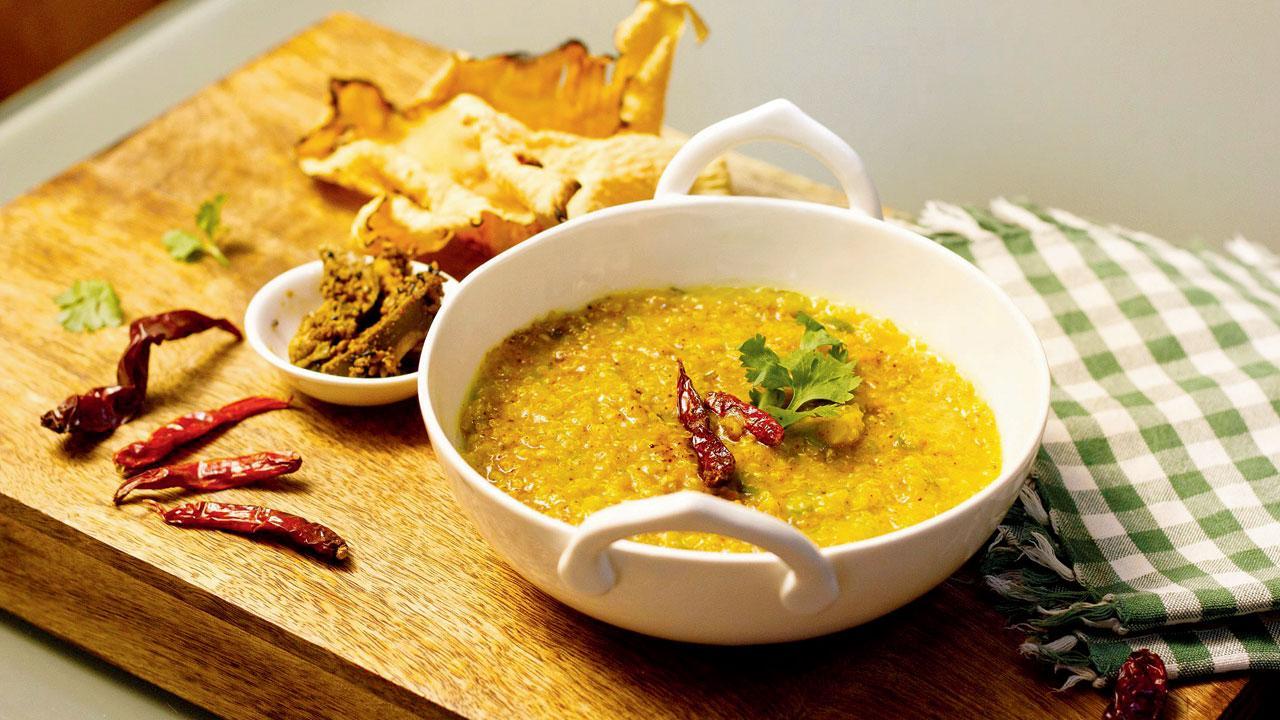In praise of the sub-continent’s de-facto ‘national dish’, because we just take it for granted, no?

The khichdi, in its more porridge form, is the first, proper adult food most Indians have had in their life (in their infancy). It might well have been the last meal many Indians had, if they were sick
 Yup, I remember the first time I fell irreversibly in love with Bombay, two decades ago. It was when I first walked in to a dive/quarter/working-class bar, which is an institution quite uniquely Bombay. That, I suspect, is currently on the wane, if not tragically getting gentrified.
Yup, I remember the first time I fell irreversibly in love with Bombay, two decades ago. It was when I first walked in to a dive/quarter/working-class bar, which is an institution quite uniquely Bombay. That, I suspect, is currently on the wane, if not tragically getting gentrified.
I mean rows after rows for a tight seating plan similar to the local train, with people, by themselves—neatly adjusted against each other, mostly looking at nothing, between their drinks studiously poured from a quarter-sized bottle, one after another, before they catch their evening train back from work. No words exchanged.
The stranger next to me casually pushes a plate of boiled eggs in my direction in the common table—in case I might be interested in his ‘chakna’. Even his eyes (on the TV set) haven’t met mine.
I’ll pass, thank you, I nudge, waiting for what he might order next—a bowl of frickin’ dal khichdi! Man, were we in this together? I’d never known anybody to order khichdi at a restaurant (let alone bar), but does it go well with whisky? Hell yeah!
And it was a staple at Bombay dives, I noticed thereafter. For, how wrong could you go with khichdi, blended into a lightness of being in the tummy, as if nothing had gone in, to mess with all the guttural substances that had!
And that is despite all that rice in it and dal, which are to each other in desi homes what Jai and Veeru are to Sholay, or Old Monk is to Thums Up, or Jagermeister to Red Bull (simply inseparable).
Only that we take this relationship so much for granted, no? Leave aside the fact that there is a special kinda khichdi for most parts of the Indian sub-continent—that apparently was the first to cultivate rice in human history—what’s the wheat-loving Punjabis’ favourite comfort food? Rajma-chawal. What is it if not, in its own way, rice and dal (of sorts)?
Even if you go down South, and appreciate its greatest culinary contribution, which is supplying the Great Indian Breakfast—what is the dosa and sambar, if not quite simply rice and dal? And since you’re going easier still, and only having medu vada and idli, isn’t it rice and dal—basically khichdi in another form, too?
As for the khichdi itself, it wasn’t until I posted an image of it on Instagram, for how that meal in my family inevitably means it’s Saturday—a ritual passed on to my mother, from her grandmother—did I realise the same is true for so many Indians (it’s a Sunday meal, every week, for many others too).
The caption to the image read, “Khichdi ke chaar yaar (khichdi’s four buddies): ghee, papad, dahi, achar (I add the Bihari bachka in mine).” Which is what nutritionists suggest makes it the wholesome meal, with adequate carbohydrates, proteins, good fat, all in one.
Although in its semi-liquid form, surely like the dhansak, the khichdi was invented for lazies (like me), who don’t wish to go through the elaborate/tiring process of sit-down, multi-course dinners/lunches—I wish I could just drink up all my meals on most days (haw, blasphemy, I know!).
The khichdi, in its more porridge form, is the first, proper adult food most Indians have had in their life (in their infancy). It might well have been the last meal many Indians had, if they were sick. That’s what the doctor orders, especially if you have an upset tummy—the only organ in the body that gets upset with its owner, and so you go scampering to pacify it with khichdi, until it gets okay!
Fascinating when you read about the history of khichdi then, with its mentions in the Vedas, the Mahabharata, indeed among the Mughals (even the Akbar-Birbal fable), down to accounts of travellers through the sub-continent, the Moroccan Ibn Battuta (14th Century), or the Russian Afanasy Nikitin (15th Century).
The West, it appears, lately discovered khichdi, when fitness enthusiast Tom Mills posted on Instagram an image of “chicken & rice: the ultimate bodybuilding staple”. Soon as desis jumped in, to tell him what it really was—arguably the oldest dish on the planet. Hipsters into ‘kapha, pitta, vata’-type Ayurveda are obviously into the “kitchari cleanse” regimen already.
And yet, like you can’t read anything about Dilip Kumar and Amitabh Bachchan without the words “thespian” and “baritone” in it, I haven’t come across a single descriptive piece without the epithet “humble” attached to the khichdi. What’s with this humility bestowed with success on this blockbuster item?
Maybe that in its frugal version, it gets associated with jail, fasting, or hospital food? How is the simplest of Indian foods associated in metaphor with a mess-up—“kya khichdi pakaya hai?”
I’m getting these thoughts devouring the legendary chicken dal khichdi (at Wong’s, a late-night Bombay dive bar), reconfirming how well it goes with a beer, realising how thankful everyone on my table should be for it the following (no-hangover) day.
Frankly, if I was khichdi, I’d sue the bloody biryani—just a piece of rice, that people go on and on about how Hyderabad>Lucknow>Calcutta, or that biryani minus meat=pulao, etc, etc. Oh, come off it. Give this dal-chawal its due first.
Mayank Shekhar attempts to make sense of mass culture. He tweets @mayankw14
Send your feedback to mailbag@mid-day.com
The views expressed in this column are the individual’s and don’t represent those of the paper.
 Subscribe today by clicking the link and stay updated with the latest news!" Click here!
Subscribe today by clicking the link and stay updated with the latest news!" Click here!










